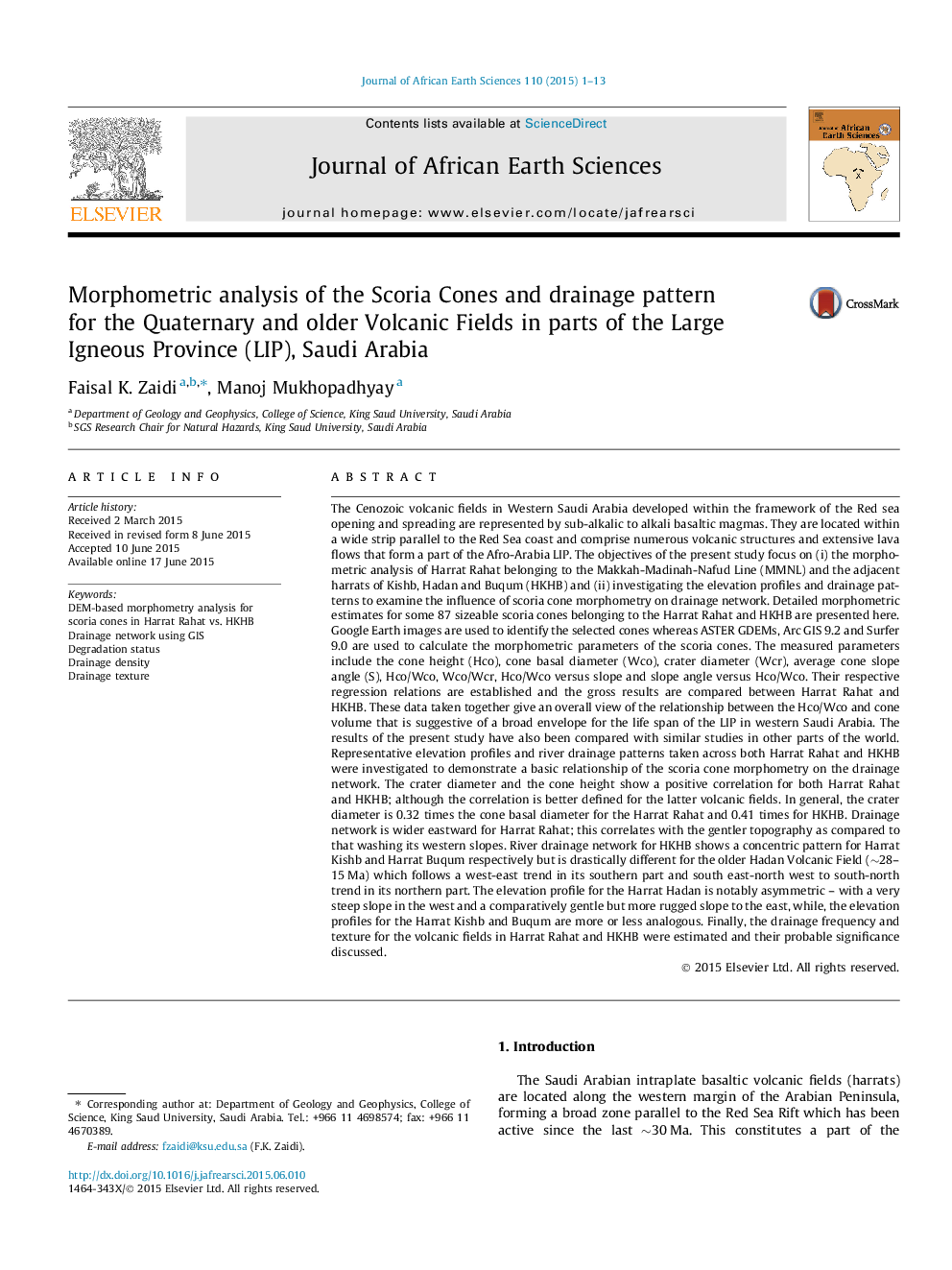| Article ID | Journal | Published Year | Pages | File Type |
|---|---|---|---|---|
| 4728584 | Journal of African Earth Sciences | 2015 | 13 Pages |
•Detailed morphometric estimates for scoria cones are presented here.•The selected scoria cones belong to Harrat Rahat, Kishb, Hadan and Buqum.•No relation between the cone slope and the age of the volcanic fields is observed.•River drainage pattern for the volcanic fields are governed by the topography.•Drainage morphometry indicates humid climatic conditions in the Quaternary period.
The Cenozoic volcanic fields in Western Saudi Arabia developed within the framework of the Red sea opening and spreading are represented by sub-alkalic to alkali basaltic magmas. They are located within a wide strip parallel to the Red Sea coast and comprise numerous volcanic structures and extensive lava flows that form a part of the Afro-Arabia LIP. The objectives of the present study focus on (i) the morphometric analysis of Harrat Rahat belonging to the Makkah-Madinah-Nafud Line (MMNL) and the adjacent harrats of Kishb, Hadan and Buqum (HKHB) and (ii) investigating the elevation profiles and drainage patterns to examine the influence of scoria cone morphometry on drainage network. Detailed morphometric estimates for some 87 sizeable scoria cones belonging to the Harrat Rahat and HKHB are presented here. Google Earth images are used to identify the selected cones whereas ASTER GDEMs, Arc GIS 9.2 and Surfer 9.0 are used to calculate the morphometric parameters of the scoria cones. The measured parameters include the cone height (Hco), cone basal diameter (Wco), crater diameter (Wcr), average cone slope angle (S), Hco/Wco, Wco/Wcr, Hco/Wco versus slope and slope angle versus Hco/Wco. Their respective regression relations are established and the gross results are compared between Harrat Rahat and HKHB. These data taken together give an overall view of the relationship between the Hco/Wco and cone volume that is suggestive of a broad envelope for the life span of the LIP in western Saudi Arabia. The results of the present study have also been compared with similar studies in other parts of the world. Representative elevation profiles and river drainage patterns taken across both Harrat Rahat and HKHB were investigated to demonstrate a basic relationship of the scoria cone morphometry on the drainage network. The crater diameter and the cone height show a positive correlation for both Harrat Rahat and HKHB; although the correlation is better defined for the latter volcanic fields. In general, the crater diameter is 0.32 times the cone basal diameter for the Harrat Rahat and 0.41 times for HKHB. Drainage network is wider eastward for Harrat Rahat; this correlates with the gentler topography as compared to that washing its western slopes. River drainage network for HKHB shows a concentric pattern for Harrat Kishb and Harrat Buqum respectively but is drastically different for the older Hadan Volcanic Field (∼28–15 Ma) which follows a west-east trend in its southern part and south east-north west to south-north trend in its northern part. The elevation profile for the Harrat Hadan is notably asymmetric – with a very steep slope in the west and a comparatively gentle but more rugged slope to the east, while, the elevation profiles for the Harrat Kishb and Buqum are more or less analogous. Finally, the drainage frequency and texture for the volcanic fields in Harrat Rahat and HKHB were estimated and their probable significance discussed.
